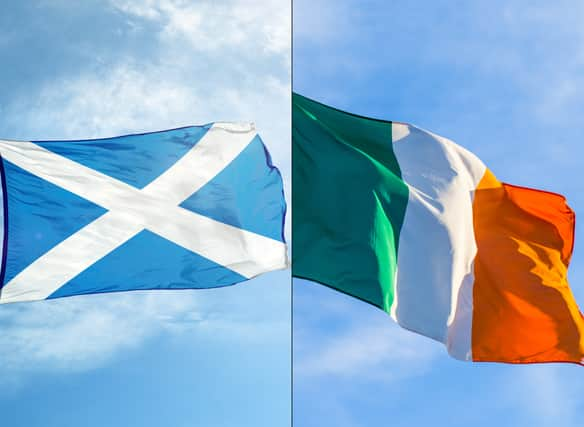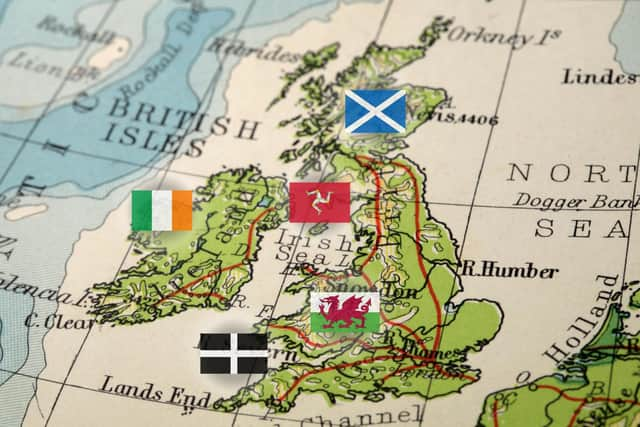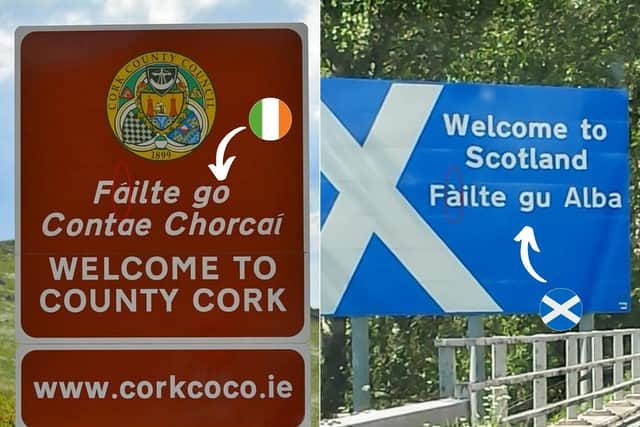Scottish Gaelic and Irish: What’s the difference, are they mutually intelligible, where does Gaelic come from?
As their heritage is closely intertwined, new Gaelic students - Irish or Scottish - often ask if they can understand their Celtic tongue’s sister language, here’s what we know.


Nowadays only six Celtic languages are spoken, these are Welsh, Breton, Cornish, Manx, Irish and Scottish Gaelic. Historically many others existed like Pictish but such examples are long extinct although traces of this Celtic heritage is found in modern place names even as far out as the USA.
With Scots Gaelic and Irish, there is much confusion about their origins and how closely related they are. All Celtic tongues share a broad language group but with distinct subfamilies; Gaelic languages are of the Goidelic branch while the Brythonic branch covers the rest.
Advertisement
Hide AdAdvertisement
Hide AdSo where did Gaelic come from, who spoke it first and can Scottish Gaelic and Irish speakers understand each other? Here are their similarities and differences, history, and statuses in their respective regions.
What is Gaelic?
The United Language Group reports that Gaelic doesn’t mean ‘Irish’ specifically but instead relating to the Gaels. The Gaels were ancient Celts who spoke the “parent” Celtic language of Goidelic tongues; they lived in Western Europe but later settled in Ireland.
Gaels of North Eastern Ulster in Ireland brought the Irish tongue to Scotland around 500 AD, that offshoot later became its own distinct dialect that diverged into a separate language; Scottish Gaelic. Both modern Irish and Scottish Gaelic have a common ancestor known as Proto-Goidelic.
Ogham Academy reports that this so-called “Primitive Irish” was spoken before the 4th century making it the oldest known Goidelic language. Nowadays, when referring to such languages, ‘Gaelic’ refers to Scottish Gaelic (Gàidhlig) while the Celtic language of Ireland and Northern Ireland is known today as ‘Irish’ (Gaeilge).
A Scottish archaeologist named Dr. Ewan Campbell, however, is famous for publishing the historical thesis ‘Were the Scots Irish?’ that challenged the above explanation for Gaelic’s presence in Scotland.
In his words: “The author attributes the claimed migrations of the Irish into Argyll to a set of elite origin myths, finding no support in archaeological evidence.”
He continues: “To summarise, if there was a mass migration from Ireland to Scotland, there should be some sign of this in the archaeological record, but there is none.
“If there was only an elite takeover by a warband, who must have adopted local material culture and settlement forms, there should be signs of the language of the native majority in the place names, but again there is none.
Advertisement
Hide AdAdvertisement
Hide Ad“A purely dynastic takeover would not have led to language change on the scale seen, and has no clear historical backing.”


What’s the difference between Scottish Gaelic and Irish?
Despite common ancestry, Scottish Gaelic and Irish are very different. It is often debated if they should be seen as dialects, as is argued for the Scots language, however this is like comparing Spanish to Portuguese. Regardless of mutual intelligibility or shared heritage the two are still distinct.
Bitesize Irish reports that the tongues ‘have many words in common’ but ‘sound very different’. For a monolingual English speaker it would be difficult to identify either just by listening to them. However, the spelling between Scottish Gaelic and Irish makes things easier.
Both written languages use accent marks but Scottish Gaelic’s point to the left and Irish to the right (if you picture the Geography it’s like two neighbours pointing at each other).


Can Irish speakers understand Scottish Gaelic?
Peadar Ó Doirnín of Fluent Irish said that ‘some Irish can sort of understand Scottish Gaelic’ and vice-versa because the two have ‘enough similarities’.
However, Bitesize Irish added: “As the two languages have grown apart, each has kept some sounds, lost some sounds, and morphed some sounds, resulting in languages that sound very much alike but are, for the most part, mutually unintelligible.”
In short, Irish and Scottish Gaelic resemble each other enough that mutual intelligibility is possible but not guaranteed.
Which language has more speakers and why?
Langoly revealed that 1,761,420 people in Ireland (39.8% of the population) claim they are able to speak Irish, according to the 2016 census. However, of that number, 558,608 only use the language within education with just 2% of the total population speaking Irish daily elsewhere.
Advertisement
Hide AdAdvertisement
Hide AdScottish Gaelic speakers have also spoken to this lack of spaces outside classrooms which has inspired new venues like the Stornoway Gaelic Cafe. In Scotland, the 2011 Census showed that 87,056 people had some Gaelic ability with 58,000 people able to speak it i.e., 1.1% of the population.
Both languages have endured historical bans and struggled against the tide of English-speaking dominance in society. Irish Central confirm that Irish is a compulsory part of the school curriculum (unlike Scottish Gaelic) which may explain why it has retained more speakers.
However, protests in Ireland have recently emerged over what critics call a ‘broken’ school system that fails to offer Irish equal rights with English, further endangering its survival in its heartland.
Comments
Want to join the conversation? Please or to comment on this article.
